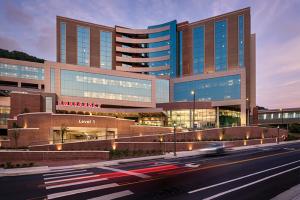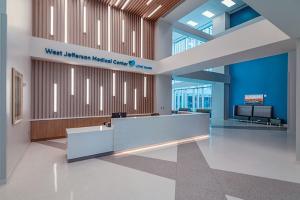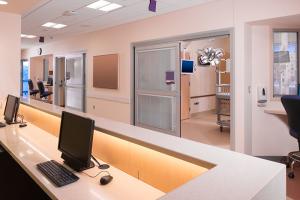PDC Summit Preview

The theme for this year's conference is “Adapting to the Shifting Tempo of Health Care” and will feature general sessions on hot topics in health facility planning.
Image courtesy of Nashville Convention & Visitors Bureau
The International Summit & Exhibition on Health Facility Planning, Design & Construction (PDC Summit) is slated for March 25-28 in Nashville, Tenn., with a program covering all aspects of the PDC process as well as larger-perspective topics targeting key trends in the health care design and construction field.
Hosted in collaboration with the American Hospital Association, the American Society for Healthcare Engineering, the Academy of Architecture for Health of the American Institute of Architects and the American College of Healthcare Architects, 100 percent of all conference revenue is reinvested into the mission of optimizing the health care physical environment.
With a Music City theme of “Adapting to the Shifting Tempo of Health Care,” more than 3,200 senior leaders from hospitals, design firms and construction companies will attend the PDC Summit to share perspectives on optimizing healing environments.
This is the one conference with an integrated audience of C-level, design, construction and operations professionals with more than two-thirds of attendees returning to the event each year. They include:
Hospital administrators: New construction and renovation of a health facility is a major investment. Senior administrators with responsibility for the design and construction of health facilities attend to gain insight on the strategic outlook for the health care physical environment and assess how to maximize operational efficiency through design.
- Architects: The PDC Summit provides architects with timely information that will affect health care facility PDC now and in the future. The event enables them to assess the long-term outlook as well as current trends and innovations for architects by hearing from a variety of top field professionals, including architects and those in the health care C-suite.
- Interior designers: Interior designers provide a unique perspective to health care planning, design and construction. Attending the meeting will give interior designers the technical knowledge needed to provide health care facilities with sustainable designs and design for effective patient healing environments.
- Construction professionals: Whether they’re attending the Certified Healthcare Constructor (CHC) exam review course, listening to a case study presentation on Lean methodologies or networking with prospective clients at one of the receptions, health care construction professionals walk away from the PDC Summit with valuable knowledge and business connections.
- Facility management professionals. Facility managers and engineers working to optimize the physical environment of health care facilities will gain insight on innovative operational strategies that complement design and construction initiatives.
More than 70 educational sessions and workshops will cover topics such as construction and renovation, patient experience, behavioral health, population health, regulation and compliance, safety and quality and FGI Guidelines.
PDC Summit programming offers cutting-edge topics affecting the future of the health care built environment and presents thought-provoking research and presentations on cross-team collaboration, PDC sustainability, designing for future generations, technology integration and more.
Additionally, the exhibition features more than 300 solution providers.
Plan to attend the PDC Summit to network with top industry professionals in the field and get the information you need to maximize value in the health care built environment.
General sessions to feature thought-provoking topics
With more than 70 educational sessions and workshops, the International Summit & Exhibition on Health Facility Planning, Design & Construction offers a wide range of learning opportunities. In addition, the conference will feature several thought-provoking general sessions, including:
- “Farsighted: Making Creative Decisions In An Uncertain World” by Steven Johnson, author of The Ghost Map; Where Good Ideas Come From: The Natural History of Innovation; Wonderland: How Play Made the Modern World; and host and co-creator of the PBS series “How We Got To Now” — Drawing upon Johnson’s research into the history of innovation and adaptive problem-solving, and his upcoming book on long-term decision-making, this talk will explore several case studies of path-breaking insights and decisions from history to explore the tools and strategies that help us find the most inventive solutions to problems any organization faces.
- “The 2018 Guidelines: Are You Ready for Change?” by Dana Swenson, PE, MBA, senior vice president and chief of facilities, UMass Memorial Health Care System; Steven Cutter, MBA, HFDP, CHFM, FASHE, director of engineering services,
- Dartmouth-Hitchcock Medical Center; and Wade Rudolph, CBET-I, CHFM, MBA, director of facilities, Mayo Clinic Health System, Franciscan Healthcare — This session will highlight the key factors that influenced changes across the Facility Guidelines Institute 2018 Guidelines for Design and Construction documents, including the decision to separate hospital and outpatient facilities to better address the unique requirements for these facility types.
- “Innovations in Health Care: Flexibility” by Joe Powell, executive director, Healthcare Infrastructure Research Institute; and a panel of top health care thought leaders — This session will discuss innovations that are advancing health care design, construction and operations while creating facilities that are flexible for the future.
- “The Joint Commission: Survey Process, Methods and Standards Update” by James Kendig, CHSP, CHCM, CHEM, LHRM, field director, Joint Commission; Timothy Markijohn, MBA/MHA, CHFM, CHE, field director, surveyor management and development division of accreditation and certification operations, Joint Commission; Kenneth A. Monroe, PE, MBA, CHC, PMP, senior associate director of engineering, Joint Commission — Hear from the Joint Commission’s lead Life Safety Code surveyors and the lead of the standards interpretation group on the Joint Commission’s survey processes and methods used to evaluate standards, codes and conditions of participation requirements.
- “Avoiding Disaster: The Texas Medical Center Story” by Terry Scott, MBA, CHFM, CHSP, SASHE, system director of engineering services, Memorial Hermann Health System; Bert Gumeringer, MBA, MSIT, CHFM, FASHE, assistant vice president of facilities operations, Texas Children’s Hospital; Michael Hatton, MBA, CHFM, RPA, SMA, SASHE, vice president of facilities engineering, Memorial Hermann Health System; Timothy Peglow, SASHE, associate vice president of patient care and prevention facilities, MD Anderson Cancer Center — When Tropical Storm Allison hit the medical center in 2001, it caused hundreds of millions of dollars in damage to these facilities. Through careful planning, design and construction, area hospitals invested in a system that was put to the test Aug. 24, 2017, when Category 4 Hurricane Harvey made landfall, causing more than $100 billion in damages to southwestern Texas. Even after more than 40 inches of rain, these hospitals were able to maintain operations and care for patients.




